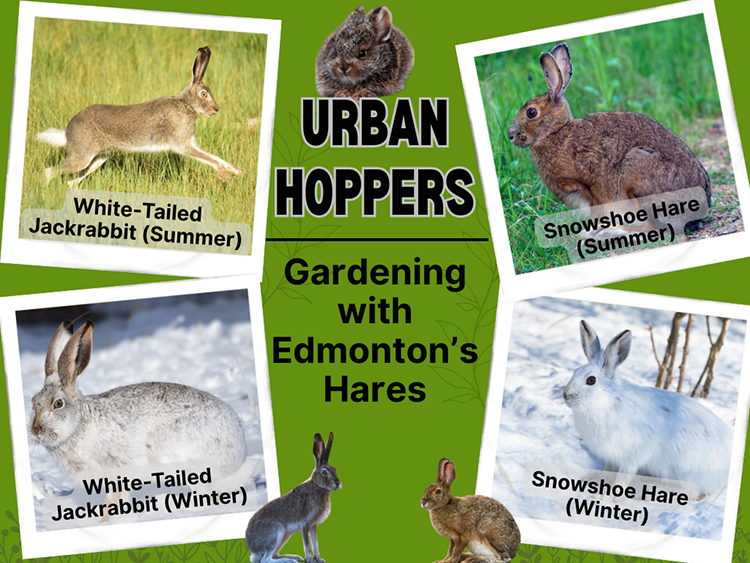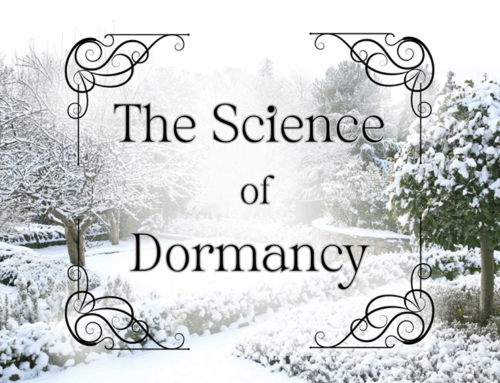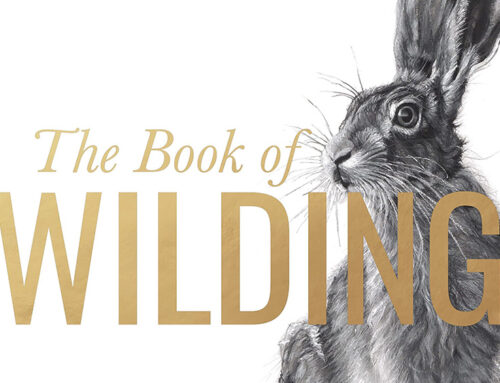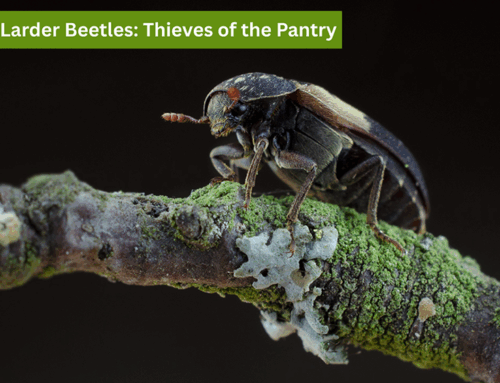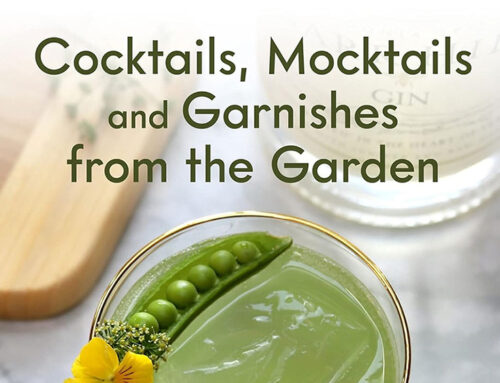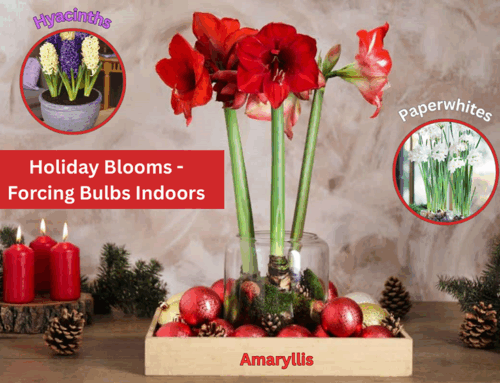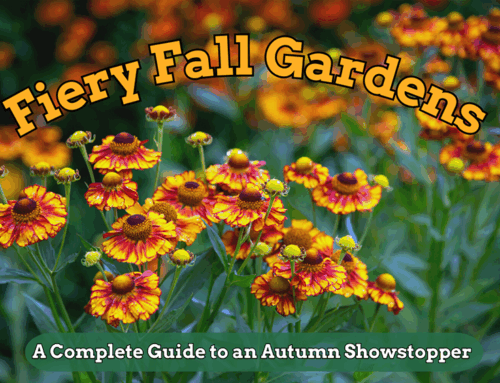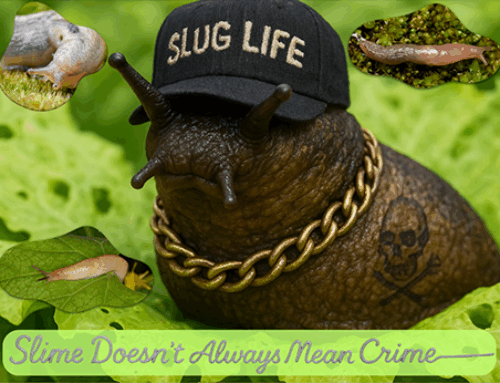Urban Hoppers: Gardening with Edmonton’s Hares
by Brett Kerley
You might think you’ve seen a rabbit dart across your yard or along a trail in the river valley—but in Edmonton, what you’ve spotted is more likely to be a hare. Though often confused with rabbits, hares are their own wild and wonderful branch of the lagomorph family, native to Alberta and built for survival in both prairie grasslands and boreal woodlands.
Edmonton is home to two native hare species, the white-tailed jackrabbit and the snowshoe hare.
Each prefer different habitats, but both species occasionally find their way into city gardens, whether as welcome wildlife or unwelcome nibblers.
This guide will help you understand Edmonton’s hares and choose the right plants and strategies for either deterring them or supporting them in your outdoor space.
White-Tailed Jackrabbit (Lepus townsendii)
Habitat: Prairie grasslands, open fields, meadows, and urban fringes
Common in: West and south Edmonton, golf courses, dry ponds, open boulevards, and rural edges
Appearance:
- 45–60 cm (18–24 inches) long; 2.5–4 kg (5–9 lbs)
- Grey-brown in summer; turns pale or white in winter
- Long hind legs built for bounding and escape
- Long ears with black tips
- Distinctive white tail seen when fleeing
Activity:
- Active mostly at dusk and dawn (crepuscular)
- Solitary and wary of humans
- Spends daytime resting in shallow grass depressions called forms
Diet:
- Summer: grasses, dandelions, clover, legumes, garden greens
- Winter: twigs, bark from shrubs and fruit trees, perennial stems
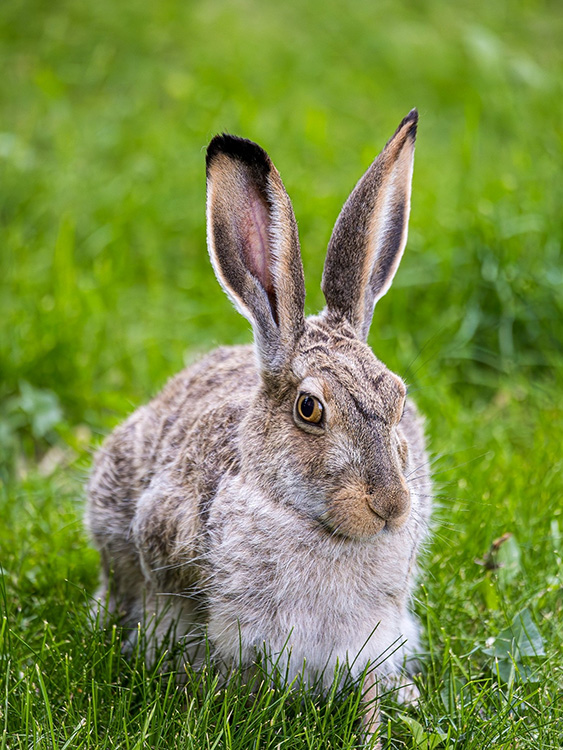
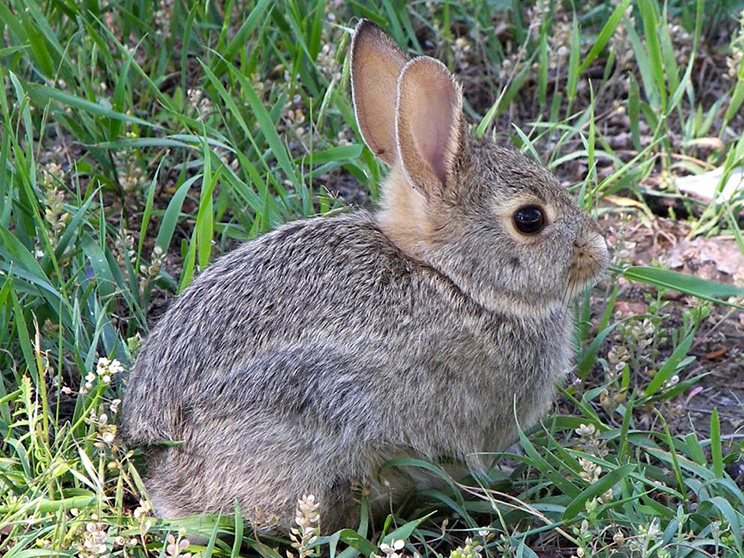
Snowshoe Hare (Lepus americanus)
Habitat: Boreal forests, thickets, wooded ravines, and shaded shrublands
Common in: North and east Edmonton near forested parkland, river valley, and naturalized yards with heavy cover
Appearance:
- 36–52 cm (14–20 inches); 1.5–2.5 kg (3–5.5 lbs)
- Brown in summer, turning bright white in winter
- Shorter ears than jackrabbits, but still long
- Huge hind feet (for snow travel) with fur-covered toes
- Small, barely visible tail
Activity:
- Nocturnal and crepuscular
- Often unseen but leaves behind tracks or winter twig damage
- Population rises and falls in natural 8–11 year cycles
Diet:
- Summer: leafy plants, groundcover, berries
- Winter: twigs from birch, aspen, dogwood, and willow; evergreen needles if desperate
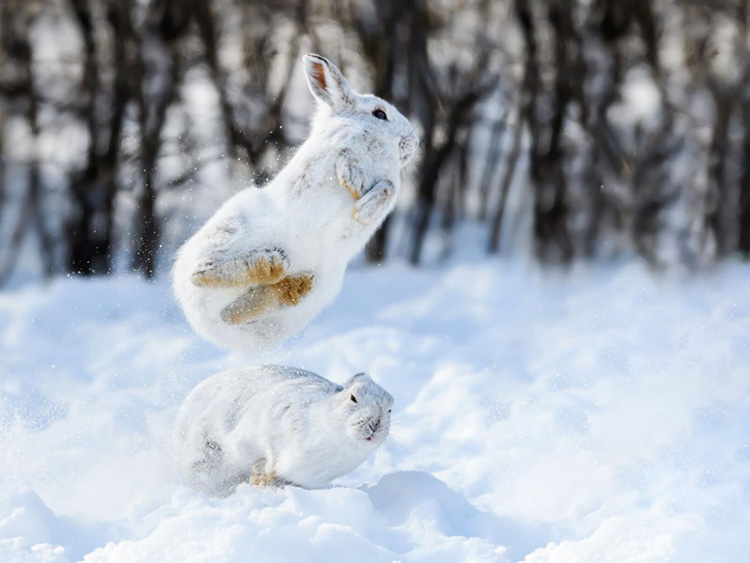
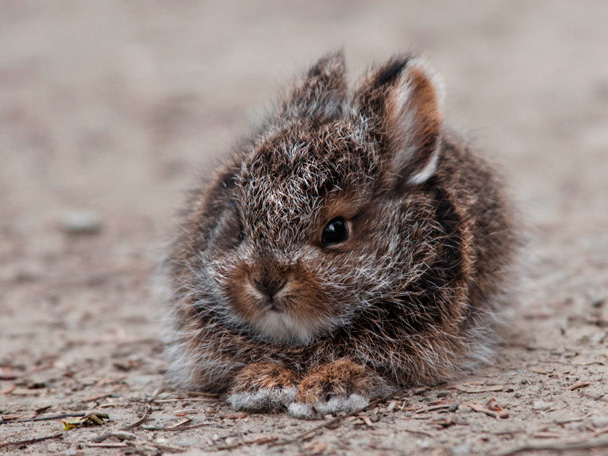
Garden Impact
Though less aggressive than rabbits, hares can still cause noticeable damage to garden plants, especially when other food is scarce.
Plants Commonly Eaten by Hares:
- Lettuce, peas, beans, and spinach
- Clover and lawn grasses
- Perennials like hosta, coneflower, and daisies
- Bark of young trees and shrubs in winter. I found they love my blueberry shrubs, and have kept them down to 6” or less. A fence will be going around them this summer!
Jackrabbits are more likely to feed in open areas like vegetable beds and lawn edges, while snowshoe hares prefer shaded, wooded areas with low cover.
Plants That Deter Hares
To discourage hares from nibbling, incorporate unpalatable plants throughout your garden beds. These work by scent, texture, or toxicity.
Scented Plants:
- Lavender
- Russian sage
- Catmint (Nepeta)
- Alliums
- Thyme and rosemary
Fuzzy or Tough Leaves:
- Lamb’s Ear
- Yarrow
- Peonies
- Columbine
- Snapdragons
Toxic/Bitter Plants (handle with care):
- Daffodils
- Foxglove
- Monkshood
- Bleeding Heart
- Milkweed
Always research safety for pets and children before planting potentially toxic species.
Plants That Support Hares
Want to support native hares in a naturalized yard or pollinator garden? Consider planting the native species that sustain them throughout the seasons.
Forage Plants:
- Native grasses (blue grama, fescue, wheatgrass)
- Alfalfa, clover, and vetch
- Dandelions and plantain
- Wildflowers like aster, fireweed, goldenrod – As I have a mostly native yard in the city, I find they love to hang out close by for that quick snack of my wildflowers.
Woody Food Sources:
- Willow
- Saskatoon
- Red osier dogwood
- Aspen and birch saplings
Habitat Builders:
- Brush piles or log shelters
- Tall ornamental grasses (Karl Foerster, switchgrass)
- Untidy corners left wild in fall
- Shrub thickets and mixed native hedgerows – I’ve also found hares love to hide out in between my garden boxes. It gives us both a scare on discovery!
Gardening Strategies: Deterrence or Coexistence?
Whether you’re looking to protect your kale or welcome wildlife, there are smart, seasonal strategies for managing hares in your Edmonton garden.
To Deter Hares:
- Install 3-5 ft fencing with 1” mesh, buried 6–10″ underground
- Use tree guards in fall to prevent bark damage
- Apply natural repellents (garlic spray, blood meal, or predator urine) around vulnerable beds
- Dog or Cat Fur – Place tufts of pet fur around garden beds. Some gardeners tuck fur into old nylons or mesh bags.
- Human Hair – Collected from hair brushes or salons, placed in mesh sachets or scattered.
- Companion plant deterrent herbs like thyme, mint, and lavender near edibles
- Commercial Organic Repellents – Products like Plantskydd, Liquid Fence, or Critter Ridder are based on natural ingredients like dried blood, egg solids, or spicy oils.
- Limit access by reducing hiding spots in critical areas (e.g., near vegetable gardens)
To Coexist or Attract:
- Plant sacrificial greens (like clover or lettuce) away from core beds. They’ve never eaten my lettuce, but love the clover I have with my wildflowers.
- Allow for untamed garden zones—edges, dry pond corners, or shady ravine-facing beds
- Focus on native plants that feed multiple species, including hares, birds, and pollinators
- Avoid excessive fall cleanup: leave seed heads and stems for food and shelter
- Educate neighbours about the value of urban wildlife corridors and native habitats
Final Thoughts
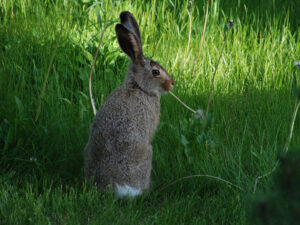 The white-tailed jackrabbit and the snowshoe hare are quiet but resilient residents of Edmonton’s changing landscape. Whether bounding across a quiet boulevard at dusk or camouflaged beneath a snow-covered shrub, they remind us that our city is part of a larger ecological tapestry.
The white-tailed jackrabbit and the snowshoe hare are quiet but resilient residents of Edmonton’s changing landscape. Whether bounding across a quiet boulevard at dusk or camouflaged beneath a snow-covered shrub, they remind us that our city is part of a larger ecological tapestry.
By planting with purpose—whether that’s protection, coexistence, or conservation—you can help balance the needs of both gardener and hare.
That’s all, folks—no bunny business! Just good gardening, a little science, and maybe one or two well-fed hares.

